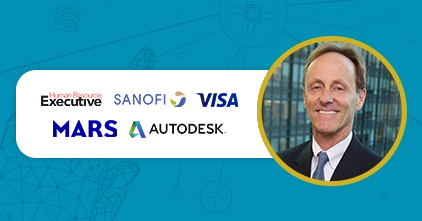Ongoing learning is more than just a noble concept. With an upskilling initiative in place, you’ll be able to reap these four key benefits.

Skills are a valuable commodity for any organization and upskilling is just the key to meeting the challenge of keeping people’s skills in sync with the constantly changing world of work. Because although it’s great to hire already skilled workers, it’s equally important to invest time, energy, and effort in evolving your current workforce.
Now’s as good a time as ever to put an advanced, people-focused upskilling strategy in place for their workforce. Let’s take a look at some of the surprising benefits of upskill training and development:
Helps employees remain employable
Job roles are changing faster than ever, making skill gaps more apparent across companies and industries. In fact, according to a 2019 study by WestMonroe, many HR professionals believe there’s a significant skills gap at their organizations; 56% say their organization’s skills gap is moderate to severe.
This heightens the need for growth and development opportunities to keep one’s capabilities up to date because it’s predicted that today’s skills may become obsolete in the next 3-5 years.
Since upskilling focuses on helping employees learn future-forward skills, companies can fill open positions while retaining their current workforce by creating learning opportunities.
By investing in their employees’ skills training, employers not only increase their professional value but also send them the message that they are worth the investment and have a place in the company’s future.
More than that, employees who are challenged to develop and grow are often the happiest ones at an organization, also making a boost in morale, productivity, and employee retention.
Sustains a culture of learning in the workplace
No one wants to work for a company that doesn’t value its employees. This is why, as an L&D professional, one of your main goals is to support every employee’s career growth through lifelong learning.
By lifelong learning, we mean an ongoing process of acquiring job-related knowledge and skills. After all, you want to ensure employees are working towards having the in-demand skills they need to succeed in the future of work.
Scaling a culture of continuous learning can be challenging, but not if you’re on top of things. Being a learning leader, your role is integral to creating (and sustaining!) this culture. To do this, you can:
- Create awareness for training resources. Regularly inform your employees that training offerings are set in place for them. This way, they’re reminded of the program you have for them in the midst of their hectic work schedules and can participate in it.
- Provide them with a learning library. To promote self-directed learning, ensure that your learning resources are organized, accessible and easily searchable. With this, learners can find the information they need when they need it most.
- Connect personal goals to business objectives. Employees want to know how their individual training can be of benefit to the company. When they can connect the training to current and future benefits, this transparency will motivate them to take training seriously.
- Make training a necessity. Don’t just make training a one-and-done thing, leaving it all up to employees once you’ve deployed your program. Together with managers, advocate for learning by helping them make time for it.

Makes workplace changes easier to handle
As organizations evolve, strategies and business models will change and will require a new set of workforce skills and more mobility opportunities.
Good thing, aside from equipping employees with sought-after skills, upskilling can also be a means to introduce new workplace changes and help employees adjust to them quickly.
While you can’t always predict changes, you can prepare for them and adjust as they come. That’s why it’s up to L&D to ease the impact of all these new things happening in the workplace by implementing an upskilling initiative.
True enough, other companies are also handling workplace changes through upskilling! According to TalentLMS, Workable and Training Journal, 68% of companies invest in reskilling/upskilling training to handle changes within the organization, and another 65% to train employees on new technologies.
How? By upskilling, you’re working on employees’ specific skill sets and encouraging the ability to accommodate and tune to change. With that, it’s not that hard to introduce new digital technologies and business changes.
Saves time, money, and energy
Much of the top talent you’re looking for might already be in your company. So before putting that job ad out, consider internal mobility first by upskilling and reskilling your current employees!
Why is upskilling a smart move compared to external hiring? Because it costs more than you might think to hire someone new every time a job role opens up than to retrain an existing employee to fit the same role. Not to mention, it takes longer to recruit and train new employees.
In fact, SHRM reports that the average cost per hire in the U.S. hovers around $4,000 and can take an average of about 42 days to find and fill a position. In some cases, it costs more and takes even longer.
Since HR and L&D only have so much budget to work with, retraining is sure to be the most viable choice for any organization today. Just take it from world-renowned HCM analyst Josh Bersin when he said “Don’t think about hiring as the only way to grow. Yes, it’s still vitally important, but growth will come from upskilling and redeploying people.”

What are you waiting for? Upskill now!
If there’s anything the new world of work has taught us, it’s that talent needs to evolve alongside technology. To be fully prepared for what’s next, every business should operate with a future-proof plan — a plan that has upskilling and reskilling at the forefront.



